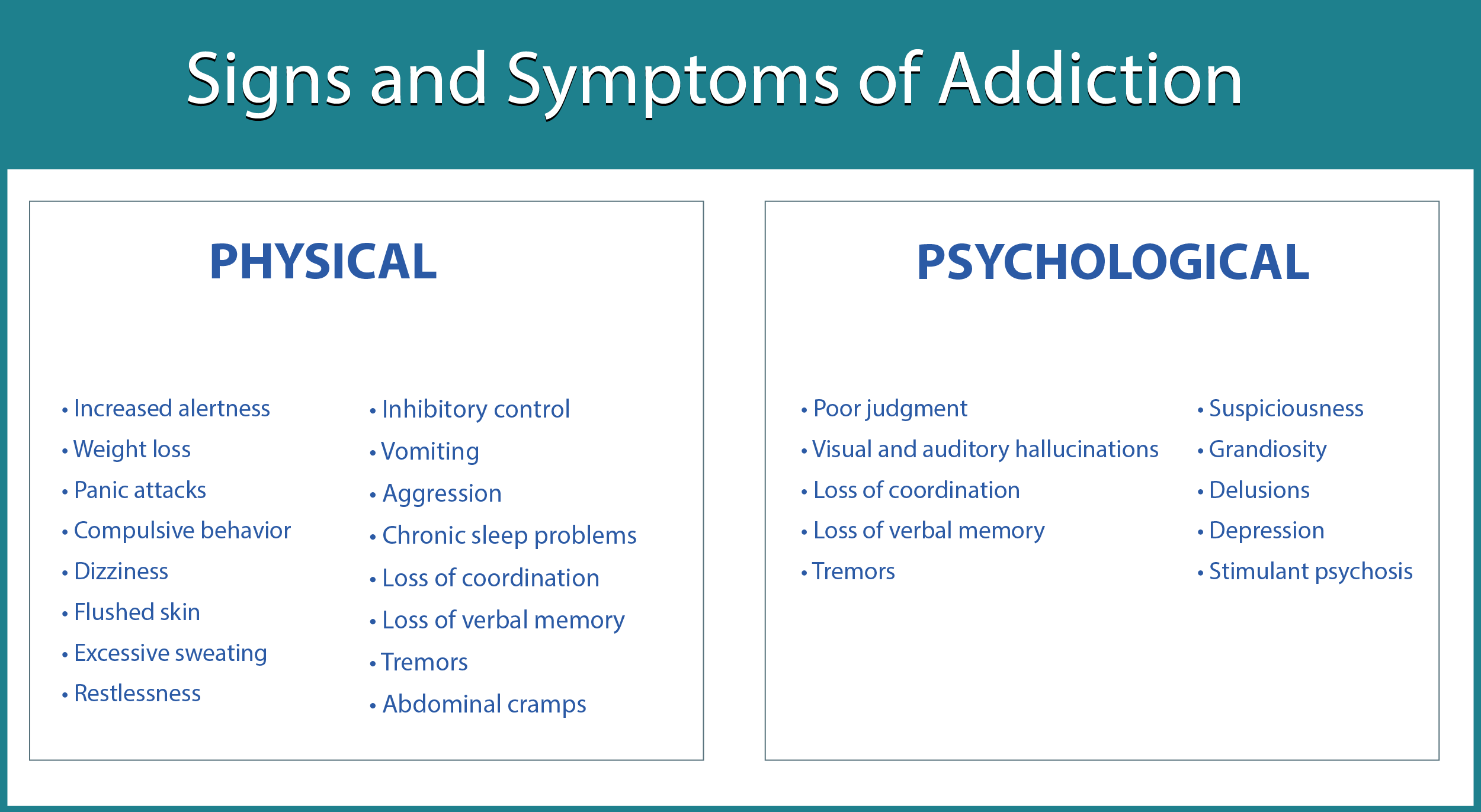Call now to get started!
We provide the support you need to rebuild your life.
Reach out to our team today at 888.707.2873.
Reach out to our team today at 888.707.2873.
 Stimulants are a class of psychoactive drugs that increase activity in the brain. These drugs can temporarily elevate alertness, mood, and awareness. Some stimulant drugs are legal and widely used but overall they carry a high vulnerability for addiction. Stimulants share many commonalities, but each has unique properties and mechanisms of action. Stimulants tend to be very addictive by nature because they release a rush of endorphins in the brain that can be easy for certain individuals to become fixated on the feeling or dependent to simply feel normal. Fortunately, if you or a loved one is affected by an addiction to stimulants of any kind, help and addiction education are available in Tampa Bay at Coalition Recovery.
Stimulants are a class of psychoactive drugs that increase activity in the brain. These drugs can temporarily elevate alertness, mood, and awareness. Some stimulant drugs are legal and widely used but overall they carry a high vulnerability for addiction. Stimulants share many commonalities, but each has unique properties and mechanisms of action. Stimulants tend to be very addictive by nature because they release a rush of endorphins in the brain that can be easy for certain individuals to become fixated on the feeling or dependent to simply feel normal. Fortunately, if you or a loved one is affected by an addiction to stimulants of any kind, help and addiction education are available in Tampa Bay at Coalition Recovery.
Reach out to our team today at 888.707.2873 or connect with us online to learn more.


Cocaine is one of the most well-known and widely used illegal stimulants. Derived from the coca plant (different than the cocoa plant used to make chocolate), it has become one of the most problematic and addictive drugs in America.
In 1855, a German scientist extracted and isolated the stimulant properties of the coca plant creating what is now known as cocaine. One of the most notable properties of cocaine was its use as a powerful anesthetic.
During the 20th century, cocaine was found in a variety of everyday products being sold as a weight loss solution and even as an energy drink called Coca-Cola, which is how the famous drink obtained its name. The Drug Act of 1906 put a stop to the use of a number of questionable substances in consumer products with cocaine being one such substance. It was during this time that the addictive and dangerous properties of the drug were emerging. It was finally determined the drug was far too dangerous compared to any medicinal properties it might have.
Today, cocaine is labeled as a schedule II drug, classifying it as a drug with high potential for abuse and physical and psychological dependence.
During the 1970s, there was a large surplus of cocaine infiltrating the United States. Faced with dropping prices, drug dealers created crack as an alternative to cocaine that could be smoked. Broken into small chunks, or “rocks,” this form of cocaine could be sold in smaller quantities, to more people for a larger profit. It was cheap, simple to produce, easy to use, and highly profitable for dealers. This started the crack epidemic of the 1980s.
Crack is made by boiling cocaine and baking soda together. While cocaine cannot be smoked, the chemical compound of crack makes it possible to both snort and smoke. Being smokeable, the chemicals in the drug reach the brain quicker and more directly than when powdered (standard) cocaine is ingested. While the high is more intense than cocaine, it is short-lived (around 15 minutes) causing users to continue to use it. The first high is the most intense, causing users to “chase the dragon” or keep using it in an attempt to feel the same high as the first.
Adderall is the 45th most prescribed medication in the United States, with more than 17 million prescriptions. Adderall is used to treat attention deficit hyperactivity disorder (ADHD) and narcolepsy (a sleep disorder). It is recreationally used as an athletic performance enhancer and cognitive enhancer, as well as an aphrodisiac and euphoriant. At therapeutic doses, Adderall causes emotional and cognitive effects such as euphoria, change in desire for sex, increased wakefulness, and improved cognitive control. At these doses, it induces physical effects such as faster reaction time, fatigue resistance, and increased muscle strength. In contrast, much larger doses of Adderall can impair cognitive control, cause rapid muscle breakdown, or induce a psychosis (e.g., delusions and paranoia). The side effects of Adderall vary widely among individuals but most commonly include insomnia, dry mouth, and loss of appetite.
One of the most common ways Adderall is abused is for enhanced cognitive function – typically with college students. Based upon studies of self-reported illicit stimulant use, 5–35% of college students use diverted ADHD stimulants, which are primarily used for the enhancement of academic performance. This can increase the susceptibility for dependence as students gradually develop a reliance on the drug for tests, essays, and studying.
Lisdexamfetamine (sold under the brand name Vyvanse) is a prescription medication like Adderall used to treat attention deficit hyperactivity disorder (ADHD). The drug is a central nervous system stimulant. Common negative side effects of Vyvanse include loss of appetite, anxiety, diarrhea, trouble sleeping, irritability, and nausea. Rare but serious side effects include mania, sudden cardiac death in those with underlying heart problems, and psychosis.
Methamphetamine is a stimulant drug usually in the form of a white powder. Crystal methamphetamine is a form of the drug that looks like crystals or bluish-white rocks. The drug is typically ingested by inhaling/smoking, swallowing it in pill form, snorting, or injecting it with a water-based solution.
In low to moderate doses, methamphetamine can elevate mood, increase alertness, concentration, and energy in fatigued individuals, reduce appetite, and promote weight loss. At relatively high doses, it can induce psychosis, breakdown of skeletal muscle, seizures, and bleeding in the brain. Chronic high-dose use can precipitate unpredictable and rapid mood swings, stimulant psychosis (e.g., paranoia, hallucinations, delirium, and delusions), and violent behavior. Methamphetamine, unlike amphetamine, is neurotoxic to the human brain and has been shown to damage serotonin neurons in the CNS. Although some of these brain changes may reverse after being off the drug for a year or more, other changes may not recover even after a long period of abstinence.
Methamphetamine is known to possess a high addiction and dependence liability. Heavy recreational use of methamphetamine may lead to a post-acute-withdrawal syndrome, which can persist for months beyond the typical withdrawal period. Risks of methamphetamine use include increased risk of contracting infectious diseases such as HIV and hepatitis B and C. Outside of the many health risks, methamphetamine use also impairs judgment and can lead to risky behaviors. Stimulant education and addiction treatment can help those struggling with this addiction heal.
\When an individual stops taking a stimulant after becoming physically dependent on the chemical, the body will go through changes called withdrawals. Stimulants like cocaine, Adderall, and methamphetamine all carry similar characteristics when it comes to withdrawals. Because stimulants cause a person to feel more energetic, increase their feelings of happiness and sociability, and even increases their attention, the absence of the drug causes the opposite effects.
Stimulant withdrawal effects include:
Generally, symptoms present themselves within a few hours to several days after the last use of the drug. Most intense symptoms peak at about a week. Some psychological symptoms, like depression, can last for weeks or even months after quitting.
If you or a loved one has been using stimulants for a while, always consult your doctor before quitting. While withdrawals from stimulants are rarely lethal, there can be serious side effects from quitting cold-turkey.
While there are no specific medications to manage stimulant withdrawals, there are medications to manage the varying symptoms associated. For instance, someone might require psychological medications or sleep aids. If someone is malnourished from ongoing stimulant misuse, they may require nutritional interventions. While detox from stimulants may be possible on one’s own, these are examples of why a professional detox procedure can increase success. A medical detox not only provides physical support but emotional support as well, as people go through withdrawal. Stimulant education can also be provided during this time.
When selecting a detox, it is important to select a facility that can handle dual diagnosis as mental health complications typically arise during withdrawals. In dual diagnosis treatment, an individual can be monitored both physically and psychologically to continually assess the appropriate further steps needed to minimize withdrawal symptoms, relapse, or further abuse.
The Substance Abuse and Mental Health Services Administration estimates that in 2007, about 22 million Americans ages 12 and older met the criteria for substance abuse or dependence as defined by the Diagnostic and Statistical Manual of Mental Disorders, Fourth Edition (DSM-IV). Of that total, 1.6 million were dependent on cocaine, while 406,000 were dependent on other types of stimulants. High rates of stimulant abuse have also been reported in Europe.
When dealing with illegal narcotic stimulants like cocaine and methamphetamine, addiction is common. While it can be difficult to recognize stimulant addictions, a sure sign is neglecting the negative impacts that come with consistent use. Someone who uses stimulants frequently will develop a dependence, meaning they need to use the substance in order to feel normal. Once dependence has developed, a tolerance will develop and withdrawal symptoms will occur when usage stops.
There are a variety of risks associated with cocaine use. Because cocaine is typically snorted, it can cause severe damage to the nasal passages causing breathing problems such as a deviated septum. One of the most serious effects of cocaine abuse is heart muscle damage leading to heart attacks and cardiac arrhythmias. Cocaine also directly impacts the brain – specifically the reward center of the brain, causing unusually erratic behavior, psychotic symptoms, and new-onset Attention Deficit Hyperactivity Disorder (ADHD).
Long-term effects from the use of crack cocaine include severe damage to the heart, liver, and kidneys. Users are also more likely to have infectious diseases. Continued daily use causes sleep deprivation and loss of appetite, resulting in malnutrition. Because crack cocaine directly affects the brain it can cause aggressive and paranoid behavior.
Some of the negative effects of methamphetamine use include:
Prescription drugs, when used as prescribed, pose a limited risk for abuse; but, when used over a few years (even as prescribed) the body develops a dependence. Therefore, anyone prescribed these medications and looking to stop taking Vyvanse or Adderall will likely need detox at a prescription drug rehab to safely stop.
That is not to say these drugs are not abused. According to the results from the 2017 National Survey on Drug Use and Health, an estimated one million individuals misused prescription stimulants within the past year. Those misusing these prescription medications are usually teens and college students trying to get better grades and older adults trying to improve their memory. Recreational use for Adderall is generally intended for increased muscle strength, a change in the desire for sex, and euphoria. Addiction to these prescription stimulants typically happens in one of two ways: an individual abuses these medications to feel high or a person becomes reliant on the drug to obtain a desired mental capacity and over time becomes physically and psychologically dependent on the drug.
Individuals who take prescription stimulants for other reasons other than treating ADHD or narcolepsy can develop high risks for addiction, heart problems, and psychosis. Behavioral effects also include:
In our Tampa recovery center, our clients receive personalized treatment plans as well as stimulant education to help them break free of addiction. At Coalition Recovery, you’ll find the compassionate support you need to make lasting changes. Reach out to our team at 888.707.2873 for more information, and begin your journey to recovery today.